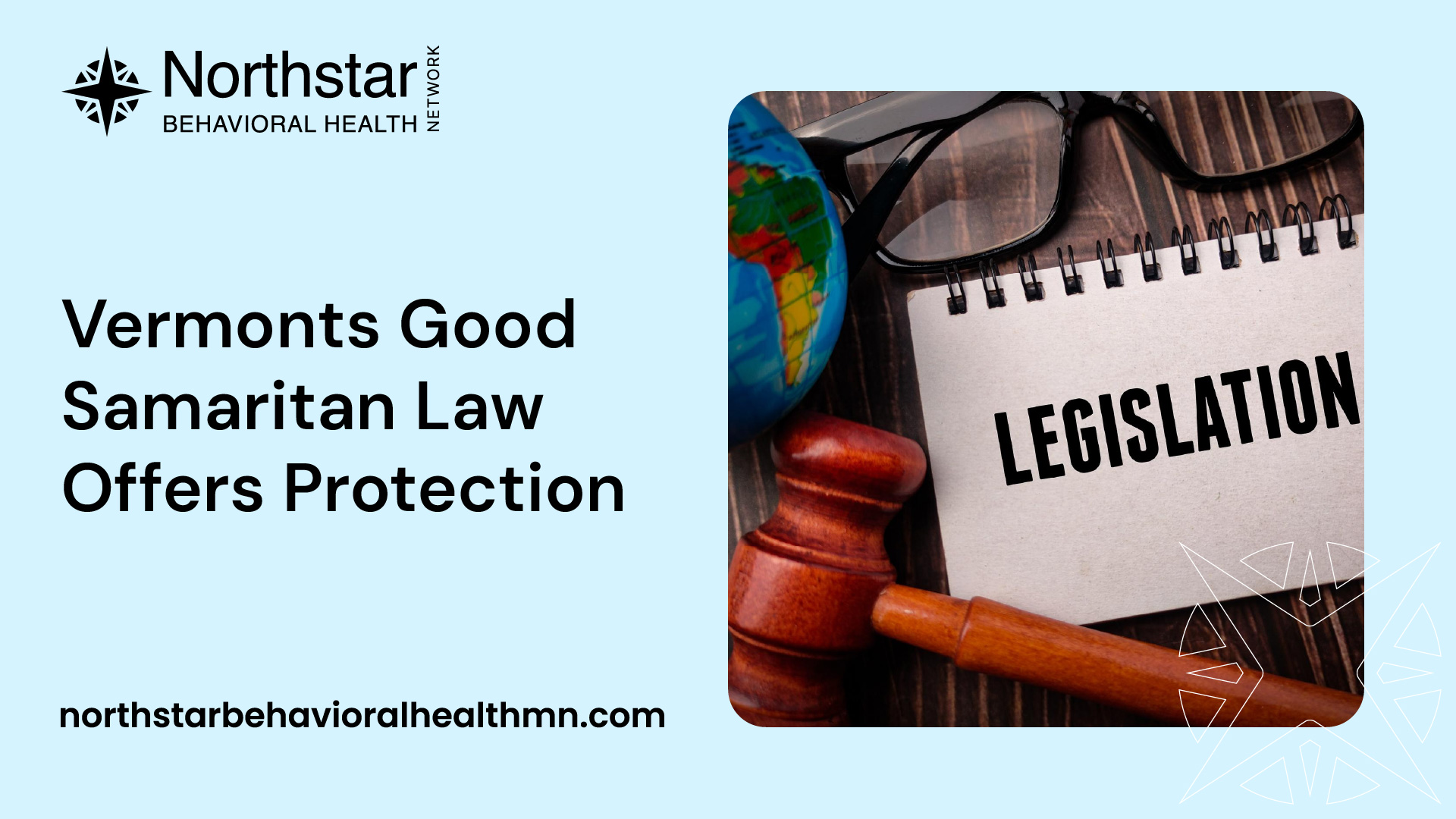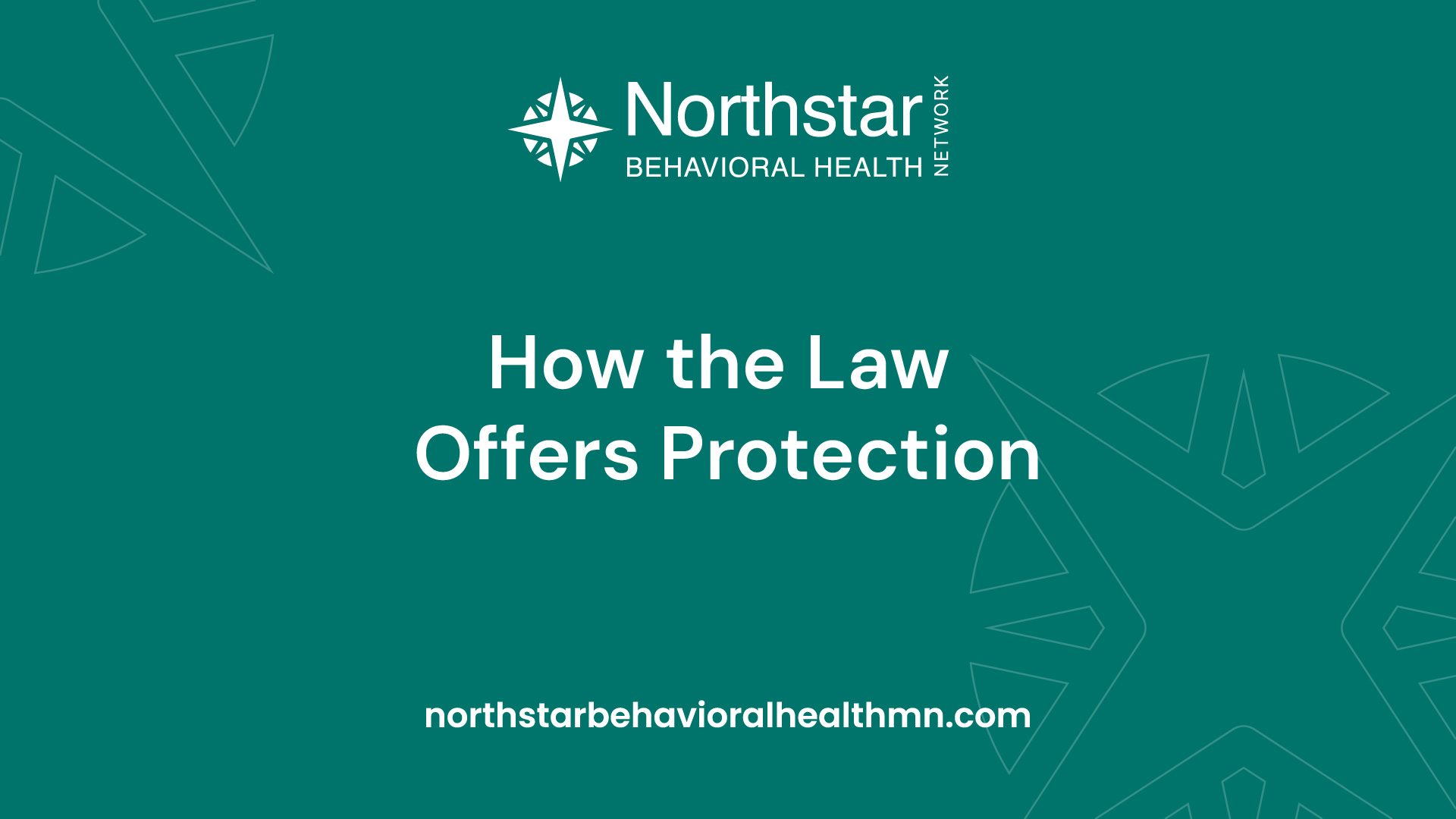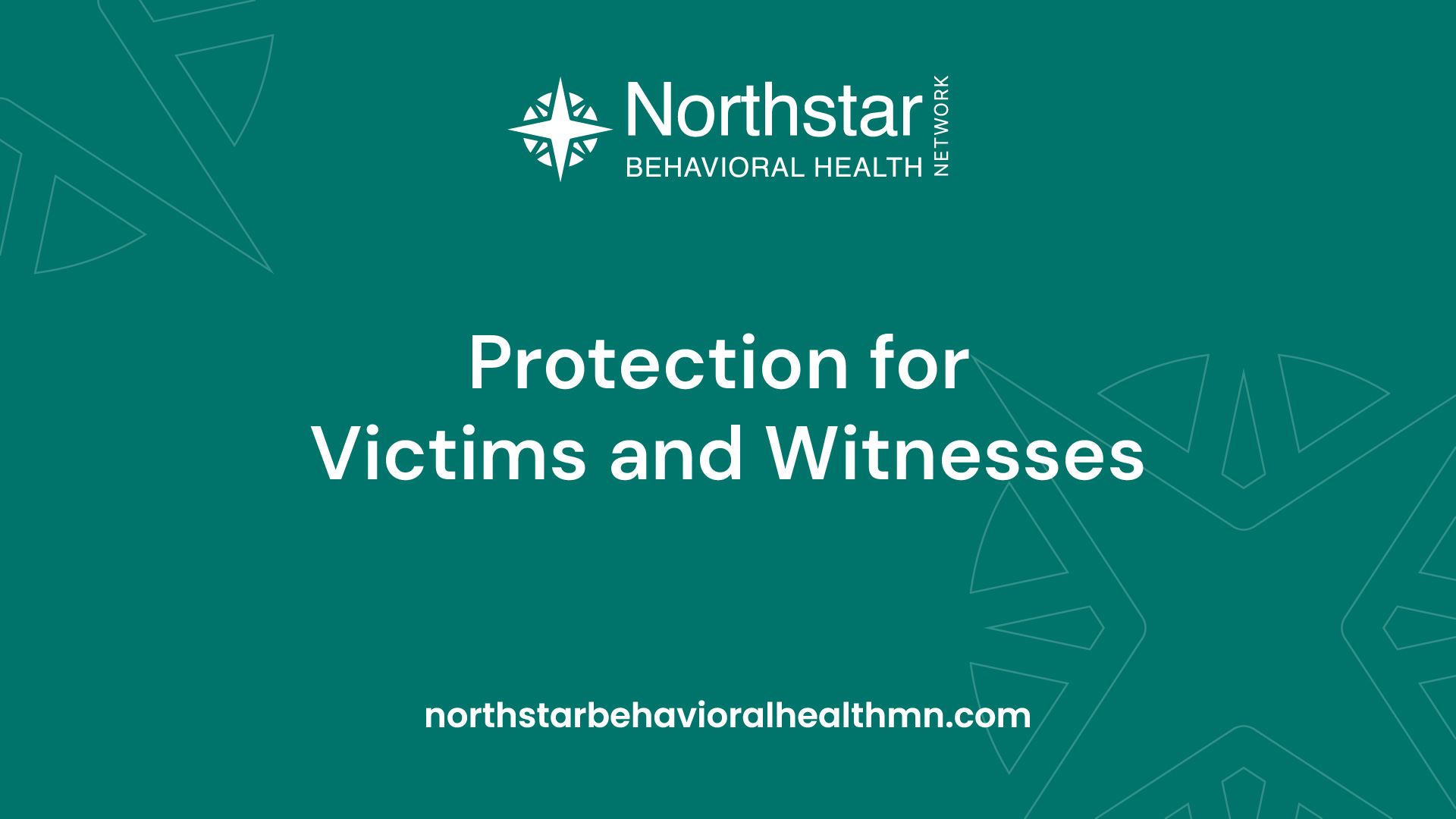August 27, 2024
Vermonts Good Samaritan Law Offers Protection
Learn how this law shields victims and witnesses in the overdose crisis.


Understanding the Overdose Crisis
The overdose crisis is a pressing issue that has far-reaching consequences for individuals and communities alike. It is essential to comprehend the severity of this crisis and its impact in order to address it effectively.
The Severity of the Overdose Crisis
The overdose crisis has reached alarming levels, with devastating consequences across the United States. Every year, thousands of lives are lost due to drug overdoses. According to the Centers for Disease Control and Prevention (CDC), in 2019 alone, there were over 70,000 drug overdose deaths reported in the country. This staggering number highlights the urgent need for action and intervention.
The crisis is fueled by various factors, including the misuse of prescription opioids, the availability of illicit drugs, and the emergence of potent synthetic opioids like fentanyl. The accessibility and potency of these substances contribute to the increased risk of overdose and fatalities.
Impact on Individuals and Communities
The overdose crisis has profound implications for both individuals struggling with addiction and the communities in which they reside. Individuals battling addiction face significant health risks, including the potential for fatal overdoses. Moreover, substance use disorders can have a detrimental impact on mental health, relationships, and overall well-being.
Communities are also deeply affected by the overdose crisis. The loss of lives and the subsequent grief experienced by families and friends have a profound emotional toll. Additionally, the strain on healthcare systems, law enforcement, and social services can be overwhelming. The economic burden associated with the crisis is substantial, with costs related to treatment, prevention, and criminal justice interventions.
Addressing the overdose crisis requires a comprehensive and multifaceted approach. It involves implementing evidence-based strategies to prevent substance abuse, expanding access to treatment and recovery programs, and providing support for individuals and families affected by addiction. By understanding the severity of the crisis and its impact, we can work together to find effective solutions and support those in need.
Introducing Vermont's Good Samaritan Law

In response to the alarming rise in overdose cases, Vermont has taken a proactive approach by implementing the Good Samaritan Law. This law aims to provide protection and support to both victims and witnesses of overdoses, emphasizing the importance of saving lives over potential legal consequences. Let's explore the purpose and scope of this groundbreaking legislation and how it offers crucial protection.
Purpose and Scope of the Law
Vermont's Good Samaritan Law was enacted with the primary goal of encouraging individuals to seek immediate medical assistance in the event of an overdose, without fear of legal repercussions. The law recognizes that quick intervention can be the difference between life and death. It aims to eliminate any hesitation to seek help by ensuring that those involved are granted immunity from certain drug-related charges.
The scope of the law extends beyond the individual who overdoses. It also covers witnesses who may be present at the scene. By providing immunity to both victims and witnesses, the law fosters an environment where individuals feel comfortable reaching out for assistance in critical situations.
How the Law Offers Protection

Under the Good Samaritan Law in Vermont, individuals who seek medical help in response to an overdose, or those who report an overdose, are protected from prosecution for certain drug offenses. This immunity applies to offenses such as possession or sharing of controlled substances, as long as the intent was to seek medical assistance or report an overdose.
The law also offers protection to individuals on parole or probation. It ensures that seeking help during an overdose will not result in a violation of their parole or probation conditions. This provision aims to remove any barriers that may prevent individuals from seeking immediate medical attention.
It's important to note that the Good Samaritan Law does not provide blanket immunity for all drug-related offenses. It does not shield individuals from charges related to drug trafficking, distribution, or other serious crimes. The focus of the law is on saving lives and promoting a safer community for all.
By implementing the Good Samaritan Law, Vermont has taken a significant step in addressing the overdose crisis and promoting a culture of compassion and support. This legislation encourages individuals to prioritize the well-being of those in need and play an active role in saving lives.
To further understand the impact of the overdose crisis and the efforts being made to combat it, explore our articles on is there a difference between a slip and a relapse? and can motivational interviewing help an addict who is willing to embrace recovery?. Together, we can create a society that values human life, empathy, and the journey toward recovery.
Rights and Responsibilities
When it comes to Vermont's Good Samaritan Law, it is essential to understand the rights and responsibilities it offers to both victims and witnesses of an overdose. This law plays a crucial role in providing protection and ensuring that individuals feel safe when seeking help in an overdose situation.
Protection for Victims and Witnesses

Vermont's Good Samaritan Law aims to protect both the victims of an overdose and the witnesses who are present at the scene. Under this law, individuals who seek medical assistance for someone experiencing an overdose are granted immunity from certain legal consequences. This means that they cannot be charged or prosecuted for drug-related offenses, such as possession or paraphernalia, if the evidence was obtained solely as a result of seeking help during an overdose.
This protection encourages individuals to promptly call emergency services without fear of legal repercussions. It creates a safer environment where individuals can take immediate action to save lives without worrying about potential legal consequences. By removing the fear of legal repercussions, the law promotes a culture of compassion and empowers individuals to act swiftly in overdose situations.
Reporting Procedures and Guidelines
Vermont's Good Samaritan Law also outlines clear reporting procedures and guidelines for individuals who witness an overdose. It emphasizes the importance of reporting the incident to emergency services as soon as possible. Prompt reporting ensures that medical professionals can provide timely assistance, increasing the chances of saving lives.
It is crucial for witnesses to provide accurate information when reporting an overdose. This includes details such as the location, the substances involved if known, and the condition of the individual experiencing the overdose. By providing accurate and concise information, witnesses can assist emergency responders in providing appropriate care.
Additionally, the law emphasizes the importance of cooperating with law enforcement during the investigation process. While individuals are protected from certain drug-related charges under the Good Samaritan Law, it is essential to comply with any lawful requests made by law enforcement officers.
By understanding their rights and responsibilities under Vermont's Good Samaritan Law, individuals can actively contribute to the well-being and safety of their communities. This law encourages swift action, cooperation, and reporting of overdose incidents, ultimately saving lives and promoting a supportive and compassionate environment for those battling addiction.
Spreading Awareness
Raising awareness about the overdose crisis is crucial in addressing the issue and promoting prevention efforts. In Vermont, various strategies have been implemented to spread awareness and educate the community about the risks and consequences of drug overdose.
Education and Outreach Efforts
Education plays a vital role in preventing drug overdoses. In Vermont, organizations and agencies have developed comprehensive educational programs to inform individuals about the dangers of drug misuse and the signs of an overdose. These programs aim to reach various populations, including schools, community centers, healthcare providers, and the general public.
Through educational initiatives, individuals are educated about the risks associated with drug use, including the potential for overdose. They learn about the signs of an overdose and how to respond in an emergency situation. Additionally, these programs highlight the importance of seeking help and support for addiction issues.
To further enhance education and outreach efforts, Vermont has established partnerships with community organizations, local businesses, and healthcare providers. These collaborations allow for the dissemination of educational materials, workshops, and training sessions to reach a wider audience. By working together, these initiatives strive to create a community that is well-informed about the overdose crisis and equipped with the knowledge to prevent and respond to overdoses.
Collaborative Initiatives to Address Overdose Crisis
Addressing the overdose crisis requires a collaborative approach involving various stakeholders. In Vermont, there are several collaborative initiatives in place to combat the overdose crisis and reduce its impact on individuals and communities.
One such initiative is the formation of task forces and coalitions comprised of representatives from law enforcement, healthcare professionals, addiction treatment providers, community organizations, and individuals with lived experience. These task forces work together to develop strategies, share resources, and coordinate efforts to address the overdose crisis comprehensively.
In addition to task forces, Vermont has implemented harm reduction programs and needle exchange services. These programs aim to reduce the harm associated with drug use by providing access to clean needles, naloxone (a medication that can reverse opioid overdoses), and other harm reduction supplies. These initiatives not only help prevent overdoses but also provide individuals with opportunities to connect with healthcare professionals and support services.
By implementing education and outreach efforts and fostering collaborative initiatives, Vermont aims to spread awareness about the overdose crisis and empower individuals and communities to take action. These collective efforts play a vital role in saving lives, reducing the stigma associated with addiction, and promoting a safer and more supportive environment for those affected by drug overdose.
Seeking Help and Support
For individuals battling addiction, seeking help and support is a crucial step towards recovery. Vermont offers a range of resources and programs designed to assist those struggling with addiction and guide them towards a healthier and happier life.
Resources for Individuals Battling Addiction
There are numerous resources available in Vermont to support individuals battling addiction. These resources can provide information, counseling, and guidance to help individuals navigate the challenges they may face on their journey to recovery. Some key resources include:
These resources can provide valuable support, information about treatment options, and help connect individuals with appropriate services in their area. It's important to reach out and take advantage of these resources to begin the journey towards recovery.
Accessing Treatment and Recovery Programs
In Vermont, there are various treatment and recovery programs available to individuals struggling with addiction. These programs offer a range of services tailored to meet the unique needs of each individual. Some common types of treatment and recovery programs include:
- Inpatient Rehabilitation Programs: These programs provide intensive, structured treatment in a residential setting. They often offer a combination of therapy, counseling, and support to help individuals overcome addiction.
- Outpatient Rehabilitation Programs: These programs allow individuals to receive treatment while living at home. They typically involve regular counseling sessions, support groups, and educational programs.
- Medication-Assisted Treatment (MAT) Programs: MAT programs combine medication, such as methadone or buprenorphine, with counseling and behavioral therapies. This approach can effectively manage withdrawal symptoms and cravings, supporting individuals in their recovery journey.
- Support Groups: Support groups like Alcoholics Anonymous (AA) and Narcotics Anonymous (NA) provide a safe and supportive environment for individuals to share their experiences, receive encouragement, and build a network of support.
To access these treatment and recovery programs, individuals can reach out to the resources mentioned above or consult with healthcare professionals, such as doctors, therapists, or counselors. These professionals can provide guidance and help individuals find the most suitable program based on their specific needs.
Remember, seeking help and support is a sign of strength and the first step towards recovery. With the right resources and programs, individuals battling addiction can find the necessary support to overcome challenges and build a brighter future.
Promoting a Safer Community
Creating a safer community involves advocating for harm reduction strategies and fostering a supportive environment for recovery. By implementing these approaches, we can address the overdose crisis and help individuals overcome addiction.
Advocating for Harm Reduction Strategies
Harm reduction strategies aim to minimize the negative consequences associated with drug use while recognizing that abstinence may not be an immediate or realistic goal for everyone. These strategies focus on reducing harm and promoting the health and well-being of individuals.
Some common harm reduction strategies include:
- Needle exchange programs: These programs provide clean needles to individuals who inject drugs, reducing the risk of HIV, hepatitis, and other bloodborne infections. They also offer opportunities for counseling and referral to treatment services.
- Overdose prevention education: Educating individuals and communities about recognizing the signs of overdose and administering naloxone, a medication that can reverse the effects of an opioid overdose, can save lives.
- Safe consumption sites: These supervised facilities provide a safe and hygienic environment for individuals to use drugs under the supervision of trained staff. Safe consumption sites offer access to medical support, treatment referrals, and overdose prevention measures.
By advocating for harm reduction strategies, we can help individuals stay safe while they navigate their journey towards recovery. For more information on harm reduction, visit our article on harm reduction strategies.
Creating a Supportive Environment for Recovery
Creating a supportive environment is crucial in helping individuals recover from addiction. It involves removing stigma, providing access to resources, and fostering a sense of community.
Supportive environments can be established through:
- Peer support groups: These groups offer a space for individuals to connect with others who have experienced addiction and are in recovery. Peer support provides encouragement, understanding, and guidance throughout the recovery process.
- Counseling and therapy: Access to counseling and therapy services can help individuals address the underlying issues contributing to their addiction. It provides a safe and confidential space to explore emotions, develop coping strategies, and set goals for recovery.
- Community involvement: Engaging the community in supporting individuals in recovery can create a sense of belonging and reduce isolation. Community events, educational programs, and volunteer opportunities can help build strong networks of support.
By creating a supportive environment, we can empower individuals on their journey to recovery and provide the resources and encouragement they need to thrive. For more information on resources for individuals battling addiction, visit our article on resources for addiction recovery.
Promoting a safer community requires collective efforts to advocate for harm reduction strategies and create supportive environments. By embracing these approaches, we can make a positive impact on the lives of individuals struggling with addiction and contribute to the overall well-being of our community.

.jpg)




.jpg)

